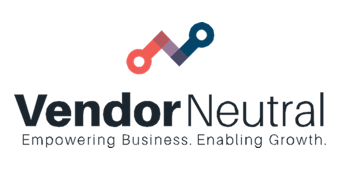Implement a Digital Strategy before Buying Sales Tech
Components of Every Successful Digital Strategy
From small companies to scaling organizations, sales technology can save you and your business time, money, and energy. That’s part of why it’s so appealing to jump at new technological resources.
To receive the maximum impact from these tools, however, you don’t need just any sales technology; you need the right sales technology. Knowing what tools are right for your company can only happen, though, when you develop a sound digital strategy, and that must occur before you even start considering sales technologies to implement.
4 Key Components of Your Digital Strategy
1. Stakeholder assessment
When devising your digital strategy, it’s essential to perform an assessment of your relevant stakeholders. Determine who these stakeholders are, and then engage with them. Identify their responsibilities and the goals they’re looking to accomplish. This will help you ascertain your priorities.
2. Buy-in and adoption
When it comes to incorporating new technology into an organization, buy-in is key to successful adoption. If the stakeholders in an organization aren’t willing to move forward and to transform as a team, it doesn’t matter if you’ve selected the right technological tool. Without commitment, that tool will never operate correctly or to its full potential.
A thorough digital strategy will account for this buy-in and will emphasize the importance of every stakeholder’s willingness to help with adoption. The strategy should anticipate how a resource will be received within the organization, and it should work to bolster stakeholder confidence in the resource and the implementation process.
These initiatives need to be in place before any tools are purchased and handed down.
3. Technological Audit
A technological audit is another essential facet of a well-rounded digital strategy. This audit will help you understand what resources the stakeholders currently have and whether those resources are being leveraged individually or across the organization. It will also collect the datasets supporting the existing sales tech stack.
A thorough technological audit begins to illuminate where gaps exist in the current resources and where those could be filled with new tech.
4. Capabilities Audit
After the technological audit, you should assess your organization’s capabilities (i.e., what tools your organization is most capable of successfully utilizing). Determining capabilities is key because it will help you avoid paying for an advanced tool that you currently lack the resources to implement. This is where many companies falter, opting for the “Ferrari” technology when they actually need the “Pinto.”
"When it comes to incorporating new technology into an organization, buy-in is key to successful adoption. If the stakeholders in an organization aren’t willing to move forward and to transform as a team, it doesn’t matter if you’ve selected the right technological tool."
What Does a Successful Digital Strategy Look Like?
For the best results with your digital strategy, make sure it adheres to the following guidelines:
- Be Goal and Outcome Oriented
A successful digital strategy will always be created with goals and outcomes in mind. Listening carefully to your relevant stakeholders will help you shape what those goals and outcomes should be for you and your business. After you’ve gathered all the relevant goals and objectives, make sure they’re in alignment across the organization.
- Be Customer-Centric
When strategizing about what sales technology resources to adopt, it’s critical to incorporate the buyer’s journey into your thinking. (If you’re not familiar with this concept, here’s a quick, high-level definition.)
If you’re not selecting technological tools with your customers and their buying behaviors in mind, you’re setting yourself up for misalignment. Your technological stack should help you optimize your organization’s approach, and your approach should always be customer-centric.
- Be Revenue Driven
The bottom line needs to figure prominently in a digital strategy. Identify your revenue growth initiatives and the revenue mark you’re driving toward. Assess the sales technology stack through the lens of whether that tool can help you reach your revenue goals.
"Assess the sales technology stack through the lens of whether that tool can help you reach your revenue goals."
- Be Integrated and Cross-Functional
A successful digital strategy works as well for individual stakeholders as it does for the whole organization. All initiatives should be integrated across individuals, teams, departments, and the broader organization, working cross-functionally to achieve outcomes and goals. Being siloed at any level of this process is an opportunity for poor communication, misalignment, and missed goals.
- Be Mindful of Messaging
There needs to be clarity and strategy developed around all relevant messaging. Without clarity and consistency in your messaging, it’s difficult to impossible to achieve that cross-functional alignment. This is critical for both external customer-facing messaging and any internal messaging.
Feeling unsure about any step in this process? Wondering if you have the internal resources and know-how to get this right? Consider reaching out to a third party. An external consultant can assess your company with neutrality and fresh eyes, and the specialized expertise can facilitate successful vendor meetings.
Want to discuss what working with a sales technology consultant would entail? Reach out today. We’re happy to answer any questions you have about the process!


